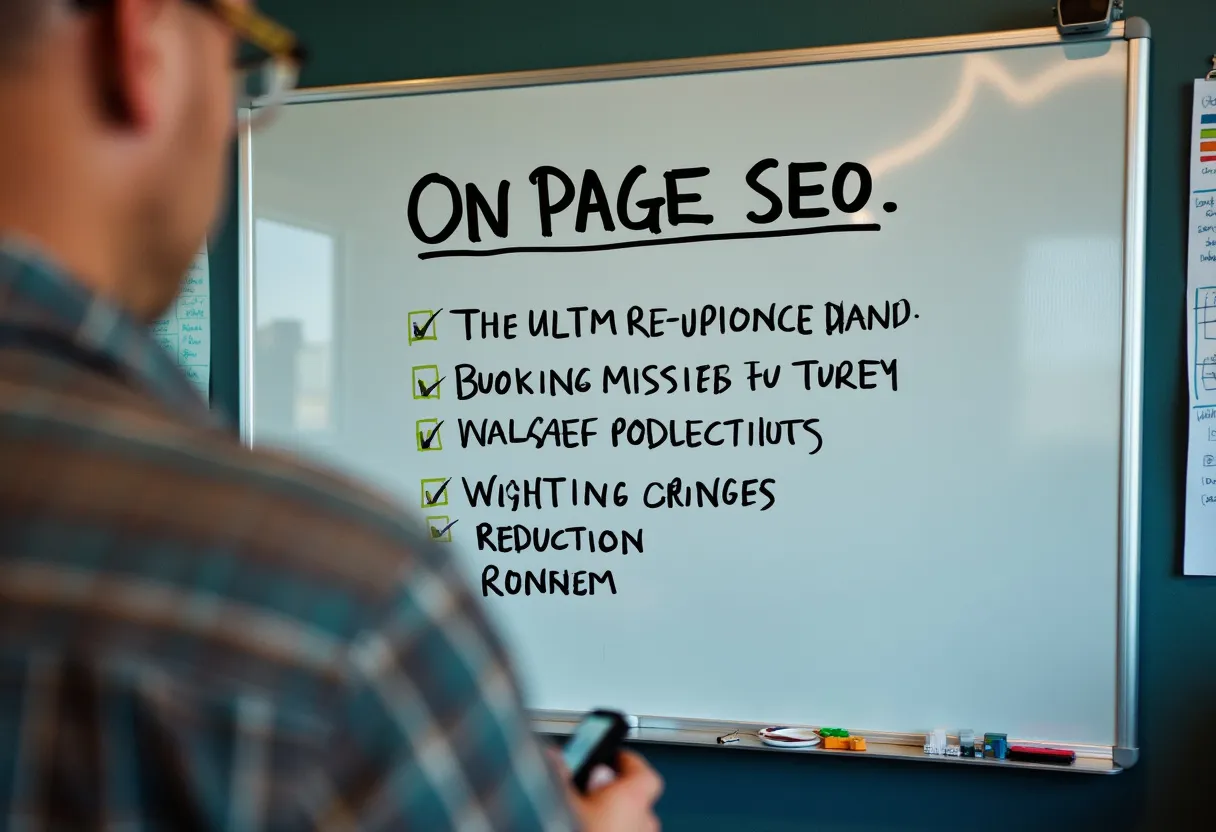Definition: What is On-Page SEO?
On-Page SEO, also known as On-Site SEO, is the practice of optimizing elements on a website’s pages to improve ranking and visibility in search engine results pages (SERPs). This involves optimizing both the content and HTML source code of a page to make it easily understandable by both search engines and users.
How It Works
Function and Concept
On-Page SEO focuses on optimizing elements directly on the website to enhance its visibility and relevance. This includes optimizing content, title tags, meta descriptions, internal links, URLs, and other technical aspects such as page speed and mobile friendliness.
Relevance in SEO
On-Page SEO is crucial for helping search engines understand the content and context of a webpage. It ensures that the page matches the user’s search intent, which is essential for ranking higher in search results.
Practical Use Cases
Optimizing content to align with user intent: This involves creating high-quality, relevant, and in-depth content that addresses the user’s search query.
Technical optimizations: Improving page load speed, ensuring mobile friendliness, and using structured data (Schema.org) to enhance user experience and search engine understanding.
Why It Matters
Importance in SEO
On-Page SEO is vital for improving search engine rankings. It helps search engines to interpret the content of a webpage accurately, which in turn increases the likelihood of the page being served to users searching for related topics.
Impact on Website Performance
Optimizing on-page elements can significantly improve website performance. Faster page load speeds, better mobile compatibility, and clear navigation enhance user experience, reducing bounce rates and increasing dwell time.
Impact on User Experience
On-Page SEO ensures that users find relevant and useful content quickly. This is achieved through clear headings, structured content, and relevant keywords, which improve the overall usability of the website.
Impact on Rankings
Proper on-page optimization signals to search engines that the webpage is a high-quality resource, leading to higher rankings in SERPs. This results in increased organic traffic and more conversions.
Best Practices
Content Optimization
Create High-Quality Content
Write unique, helpful, and in-depth content that matches user intent. Use the E-E-A-T (Experience, Expertise, Authoritativeness, and Trustworthiness) method to ensure content quality.
Keyword Research and Strategic Placement
Perform keyword research to identify relevant topics and target keywords. Place these keywords strategically in headings, paragraphs, and meta tags without resorting to keyword stuffing.
Technical Optimizations
Optimize Title Tags and Meta Descriptions
Write keyword-rich title tags and click-worthy meta descriptions to improve click-through rates (CTR) and help search engines understand the page’s content.
Improve Page Speed
Ensure that your webpage loads quickly to enhance user experience and search engine rankings. Use tools like Google PageSpeed Insights to identify and fix speed issues.
Mobile Friendliness
Ensure that your website is mobile-friendly, as this is now a key ranking factor. Test your site using Google’s Mobile-Friendly Test tool.
Linking and URL Structure
Internal Linking
Use internal links to help users and search engines navigate your site. This also helps in distributing link equity across your website.
Optimize URLs
Use descriptive and clean URLs that include target keywords to help search engines understand the content of the page.
Structured Data and Metadata
Use Schema.org Structured Data
Add structured data to your pages to provide additional context to search engines, which can improve your page’s visibility in search results.
Optimize Page Metadata
Ensure that all metadata, including title tags, meta descriptions, and header tags (H1, H2, etc.), are optimized and relevant to the content.
Regular Updates and Refreshing Content
Keep Content Up-to-Date
Regularly update and refresh your content to ensure it remains relevant and accurate. This helps in maintaining user trust and search engine favorability.
Additional Techniques
Content Audit and Refresh
Perform regular content audits to identify outdated or underperforming content. Refresh this content to make it more relevant and accurate.
Content Cannibalization Fix
Avoid content cannibalization, which occurs when multiple pages target the same keyword. Merge or differentiate these pages to ensure each one targets unique keywords.
Content Freshness
Ensure your content is fresh and up-to-date. Frequent updates signal to search engines that your content is current and valuable.
Content Gap Analysis
Identify content gaps and fill them by creating new content that addresses unmet needs or queries of your target audience.
Content Gap Filling
Fill content gaps with relevant and useful information that enhances the comprehensiveness of your site.
Content Relevance
Ensure all content is relevant to your audience’s needs and interests. This helps in maintaining high engagement and reducing bounce rates.
Content Silos
Create content silos by grouping related content together. This helps in organizing the site’s structure and improving internal linking.
Internal Link Optimization
Optimize internal links to distribute link equity more effectively and improve the user experience by making navigation easier.
Meta Description
Write compelling meta descriptions that include target keywords. This helps improve CTR from search engine results.
Title Tag
Create descriptive and keyword-rich title tags to improve the page’s relevance and visibility in search engines.
Conclusion
On-Page SEO is an essential aspect of optimizing your website for search engines and users. By focusing on content quality, technical factors, and effective linking strategies, you can significantly enhance your site’s visibility, user experience, and search engine rankings. Regularly updating and refining your on-page elements will ensure long-term success in the ever-changing landscape of SEO.



